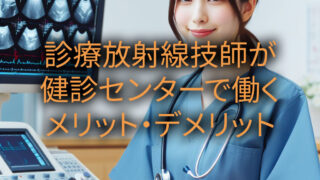Introduction: Now is Your Prime Opportunity in the RT Job Market
Are you satisfied with your current workplace environment and compensation as a radiologic technologist? As of 2025, the RT job market is thriving, presenting an excellent opportunity for career advancement and salary increases.
With the aging society, demand for cancer screenings and health checkups continues to rise, making the role of radiologic technologists increasingly vital. Particularly with AI technology integration, the field is shifting from traditional tasks to advanced diagnostic support, creating surging demand for highly specialized technologists.
This comprehensive guide provides concrete strategies for successful RT career transitions, latest market trends, and salary optimization secrets, based on interviews with professional career consultants.
1. Latest RT Job Market Trends (2025 Edition)
1-1. Job Opening Ratios and Career Mobility
As of 2025, the job opening-to-applicant ratio for radiologic technologists stands at 1.03, continuing the seller’s market. Particularly for experienced hires, many healthcare facilities seek immediate contributors, expanding opportunities for salary increases through career transitions.
💭 Radiologic Technologist Career Transition Reasons
※Based on survey data from 3 major career agencies (n=500)
Key characteristics of current job openings include:
- Vacancy Replacement Focus: Many openings arise from predecessor departures, with increased postings after bonus periods and fiscal year transitions
- Single-Position Recruitment Dominance: Most positions close once filled, making regular job board monitoring crucial
- Rising Demand for Female Technologists: Increased mammography examinations drive particularly high demand for female RTs
1-2. Regional Job Market Analysis
Average salaries for radiologic technologists vary significantly by region. According to 2024 data:
🗾 Top 10 Prefectures by Average Salary
- Highest Tier: Akita Prefecture (approx. $42,800), Nara Prefecture (approx. $42,700)
- Metropolitan Areas: Tokyo (approx. $34,900), Osaka (approx. $38,800)
- Lowest Tier: Kagawa Prefecture (approx. $25,700)
Surprisingly, major metropolitan areas don’t necessarily offer the highest salaries, revealing that regional positions can provide high income with gained experience.
2. Career Path Diversification and Specialization Pursuit
2-1. Career Paths in Healthcare Facilities
RT career paths have evolved from the traditional “Technologist → Supervisor → Manager → Department Director” progression to more diverse options.
Career at Large Hospitals (University/General Hospitals)
- Abundant exposure to cutting-edge medical equipment
- Opportunities to specialize in specific areas
- Frequent research and conference presentation opportunities for academic careers
- Average Salary: $27,000~$40,000
Career at Clinics/Medical Practices
- Work-life balance emphasis possible
- Solo positions carry heavy responsibility but can offer high compensation
- Average Salary: $23,000~$30,000
Career at Health Screening Centers
- Day shifts only with regular schedule
- Specialized expertise in preventive medicine
- Average Salary: $23,000~$27,000
🏥 Average Salary Comparison by Workplace Type
2-2. Career Transitions Beyond Healthcare Facilities
Recently, RT opportunities have expanded beyond traditional healthcare settings.
Medical Equipment Manufacturers (Application Specialists)
- Technical support leveraging clinical experience
- Product demonstrations accompanying sales teams
- Average Salary: $30,000~$47,000 (Foreign companies: $47,000+)
Research & Educational Institutions
- Training next-generation radiologic technologists
- Cutting-edge technology research and development
- Stable employment environment
3. Skills Required for Radiologic Technologists in the AI Era
🤖 Predicted Workflow Changes with AI Integration (2025-2030)
※Based on predictive data from Japan Society of Medical AI
3-1. New Working Methods Coexisting with AI
While concerns about “AI taking jobs” exist, AI will actually “transform” rather than “replace” RT work.
AI-Excelling Tasks
- Automated image processing (alignment, 3D reconstruction, etc.)
- Radiation dose optimization
- Scheduling efficiency
Uniquely Human Tasks
- Patient communication
- Flexible emergency response
- Interprofessional coordination
- AI system quality management
3-2. Future Essential Skills
Skills required for AI-era radiologic technologists include:
Digital Technology Understanding
- AI diagnostic support system utilization
- Programming basics (Python)
- Data analysis capabilities
Advanced Specialization
- MRI and nuclear medicine expertise
- Radiation treatment planning abilities
- Latest technologies like IMRT (Intensity-Modulated Radiation Therapy)
Communication Skills
- Patient explanation abilities
- Team healthcare coordination skills
- Interprofessional collaboration competencies
📚 Desired Professional Skill Areas for Development
4. Career Transition Strategies for Salary Optimization
4-1. Salary Reality and Potential
The average salary for radiologic technologists is approximately $37,000 (2024 data), relatively high among healthcare credentials.
📈 Average Salary Progression by Age
※Based on Ministry of Health, Labour and Welfare “2024 Basic Survey on Wage Structure”
However, strategic career transitions enable further salary increases.
Salary Increase Key Points
- 20s to Early 30s: High potential for salary increases through career transitions
- 40s and Beyond: Effective transitions into management or specialized positions
- Credential Acquisition: Specialized certifications enhance market value
4-2. Workplace Characteristics for High Salaries
For targeting $40,000+ salaries, consider these workplace types:
Solo-Position Clinics
- Heavy responsibility covering all examinations
- Salary range: $30,000~$40,000 possible
Foreign Medical Equipment Manufacturers
- Application specialist roles
- Salary: $47,000+ cases available
Large Hospital Management Positions
- Department director level: $40,000~$53,000
- Management skills essential
💰 Salary Change Rates Through Career Transition
5. Concrete Steps for Successful Career Transitions
5-1. Optimal Timing for Career Activities
Peak periods for RT career transition activities:
- March~April: Fiscal year transition period
- July~August: Post-summer bonus transitions
- December~January: Post-winter bonus transitions
While job openings increase during these periods, competition intensifies, making early preparation crucial.
🎓 Satisfaction Levels by Years of Service
5-2. Utilizing Job Sites and Career Agents
RT-specialized career services enable efficient job searching.
Major Career Services
Radiologic Technologist Talent Bank
- RT-specialized career partners
- Numerous non-public job listings
- Completely free support
MyNavi Co-Medical
- 1,500+ nationwide public job listings
- Approximately 40% non-public listings
- Resume review and interview preparation included
Radiologic Technologist JOB
- Career consultants with professional credentials
- Salary negotiation representation
- Detailed workplace atmosphere information
5-3. Resume and Interview Preparation Tips
Crafting Your Career Objective
- Clearly articulate specific career vision
- Provide concrete reasons for choosing that hospital/facility
- Demonstrate how your skills can contribute
Common Interview Questions
- “Why are you considering a career transition?”
- “What do you want to achieve at our facility?”
- “What are you doing to enhance your specialization?”
6. Career Transitions Emphasizing Work-Life Balance
6-1. Work Reform and Radiologic Technologists
As of 2025, work reform is progressing in healthcare, gradually improving RT working environments.
Workplaces Enabling Work-Life Balance
- Health Screening Centers: Day shifts only, weekends off
- Clinics: No night shifts, minimal overtime
- Corporate Medical Offices: Calendar-aligned holidays
6-2. Life Stage-Appropriate Career Transitions
20s: Skill Development Focus
- Gain broad experience at large hospitals
- Master cutting-edge equipment operation techniques
30s: Specialization and Balance
- Deepen expertise in chosen specialty areas
- Select workplaces considering family compatibility
40s and Beyond: Management or Specialized Professional
- Engage in organizational management as supervisor
- Contribute to training next generation as specialized technologist
🎯 Career Transition Destination Breakdown
Summary: Realizing Your Ideal Career
The RT career transition market is currently experiencing a major turning point. While AI technology integration transforms job content, demand for highly specialized technologists continues rising.
Key Points for Successful Career Transitions:
- Understand Market Trends: Leverage the 1.03 job opening ratio seller’s market
- Clarify Career Plans: Specialization pursuit or management orientation?
- Acquire New Skills: AI utilization abilities, digital technology understanding
- Move at Optimal Timing: Fiscal year transitions and post-bonus job opening increases
- Utilize Specialized Career Support: Use RT-specialized agents
The $37,000 average salary level can be elevated to $40,000 or $47,000+ through strategic career transitions. What’s important is clarifying your career vision and taking concrete action toward it.
The radiologic technologist profession—supporting patient diagnosis and treatment in healthcare settings—will remain indispensable to society. As specialized professionals providing increasingly advanced healthcare while coexisting with AI, realize your ideal career.
Career transition is a major life decision. However, with appropriate preparation and strategy, success paths will certainly open. We hope this guide assists your career transition journey.
Author’s Note: This article was created based on the latest information as of October 2025. Career markets and systems may change, so please verify current information through career service websites and official institutions.
Read in other languages:


